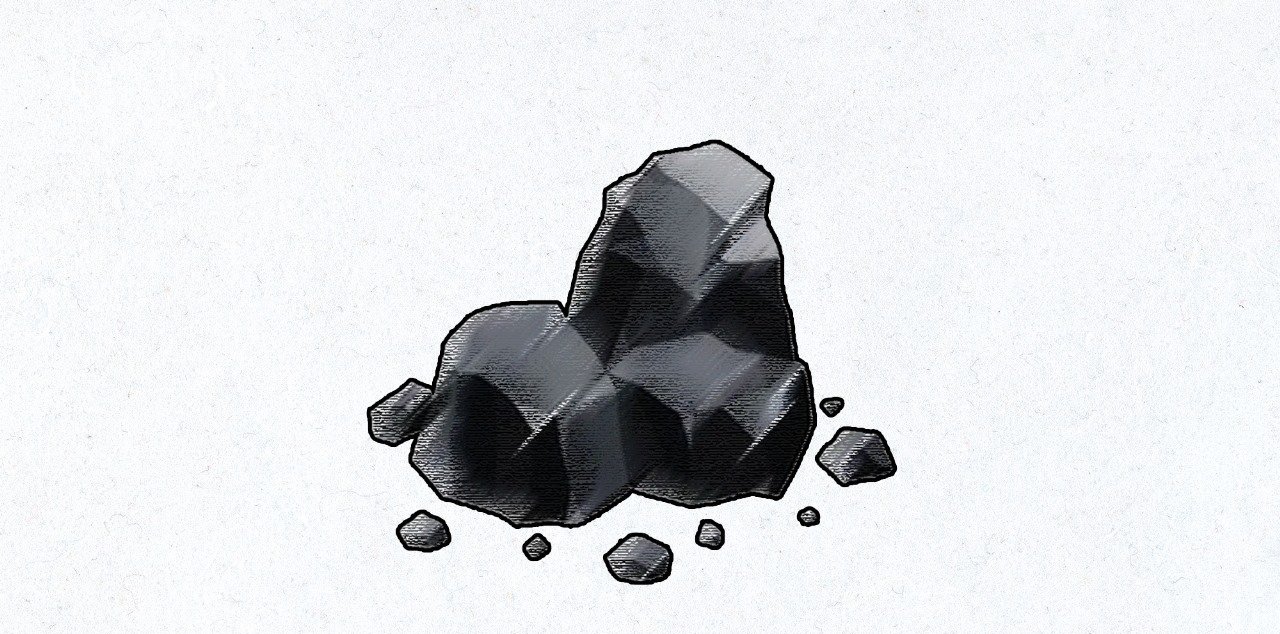Graphite
Graphite is an opaque, non-metallic carbon polymorph that is blackish silver in color and metallic to dull in sheen. Since it resembles the metal lead, it also known colloquially as black lead or plumbago.
It was called graphite only in 1789, when a Swedish chemist discovered that the substance was crystalized carbon, and named it graphite, derived from the Greek word ‘graphein’ meaning ‘to write’.
Pencil is an older word, derived from the Latin ‘pencillus’, meaning ‘little tail’. It was first discovered in the 16th century in England. Its unique properties quickly made it a favorite among artists and writers alike. The famous “Borrowdale mine” in Cumbria is where the first large deposit was found, leading to the creation of the first graphite pencils.
Originally, graphite pencils were wrapped in string or sheepskin for stability, however; mineral carbon proved so soft and brittle that it required a holder.
Thus the graphite was inserted into hollowed-out wooden sticks, creating the beginning of wood-cased pencils. By the by end of the eighteenth century, pencils (a word derived from the Latin peniculus for brush) would be fabricated from clay and low-quality graphite, based on the invention of Nicolas-Jacques Conté (1755–1805).
The first mass-produced pencils were natural and unpainted to show off high-quality wood casings. But, by the 1890s, many pencil manufacturers started painting pencils in yellow colour and imprinting them with brand names.
The yellow pencil has a much deeper history than you might expect. During the 1800s, the best graphite in the world came from China. American pencil makers wanted a special way to tell people that their pencils contained Chinese graphite.
In China, the color yellow is associated with royalty and respect. American pencil manufacturers began painting their pencils bright yellow to communicate this “regal” feeling and association with China. However, according to Henry Petroski’s history of the pencil, the European producer Koh-I-Noor was the first to introduce a yellow pencil.
Adjusting the proportions of graphite and clay produces variations in both texture and depth of tone.
Click here to understand more about types of graphite pencils and how it differs from charcoal.
Charcoal
Charcoal, on the other hand, boasts a history that stretches back to ancient times. It is made from twigs of willow or vine that have been heated at a high temperature in an enclosed vessel without oxygen. This process yields a solid drawing stick that produces a black line when stroked across a sheet of paper, a prepared canvas, or a wall primed for fresco.
Used by early cave artists to create stunning visuals on rock walls, charcoal’s deep, rich blacks have been a staple in the artist’s toolkit for millennia.
Charcoal Pile. Courtesy: Wikipedia
Its production involves burning wood in a low-oxygen environment, resulting in a material perfect for drawing and sketching. It was during the Renaissance that charcoal sketches gained prominence as artists like Leonardo da Vinci and Michelangelo used them to refine compositions and study human anatomy.











